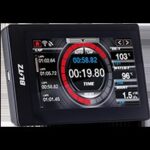The Obd2 Code Na 01 02 can be confusing for vehicle owners. This code doesn’t follow the standard OBD2 format and often indicates an issue not directly related to the engine. This article explores the meaning of this code, why it appears, and what steps you might consider.
While a code reader might display “N/A 01/02” or “N/A 02/02”, these aren’t standard OBD2 diagnostic trouble codes (DTCs). Modern vehicles are complex systems with numerous electronic components beyond the engine. The Malfunction Indicator Lamp (MIL), often referred to as the Check Engine Light, can illuminate for a variety of reasons, not all of which indicate a serious engine problem.
Originally, the Check Engine Light primarily monitored the engine itself, alerting drivers to potential mechanical issues. As emissions regulations tightened, the system began to monitor components related to the vehicle’s emissions system. Issues here would trigger the light and potentially lead to a failed emissions test.
Today’s vehicles, however, utilize a vast network of sensors and computers managing everything from engine performance to climate control. The MIL now serves as a broader indicator of malfunctions across various systems. This is why the term “Malfunction Indicator Lamp” (MIL) has replaced “Check Engine Light” in many contexts. For example, FCA (Fiat Chrysler Automobiles) uses the MIL designation.
The appearance of an “N/A” code, coupled with numbers like “01/02” or “02/02,” often suggests a problem in a system outside the core engine diagnostics. These could be temporary glitches, disconnected sensors on non-critical components (like air dams or grill shutters), or more substantial problems requiring immediate attention. In one instance, an “N/A 01/02” code was associated with a faulty air dam. The vehicle operated normally, highlighting that these codes don’t always indicate drivability issues.
While a malfunctioning air dam wouldn’t affect how the vehicle drives, other issues triggering the MIL could be more serious. Misfires, transmission problems, or issues with any of the numerous computer systems controlling the car could all illuminate the MIL.
The complexity of modern vehicles and their interconnected systems means a simple code reader might not provide a definitive diagnosis. When encountering an unusual code like NA 01 02, consulting a professional mechanic with access to advanced diagnostic tools is recommended. They can pinpoint the root cause and recommend the appropriate course of action.
